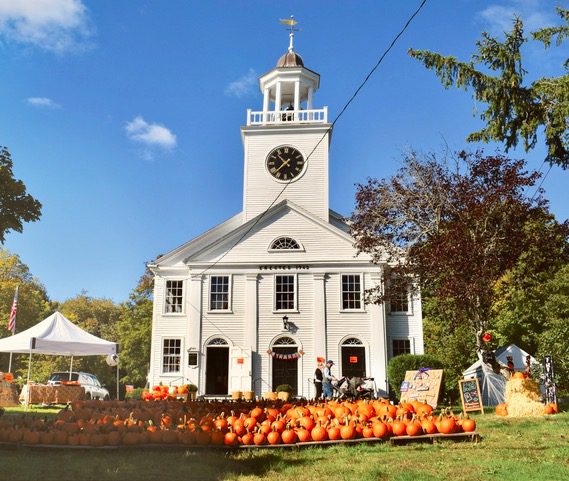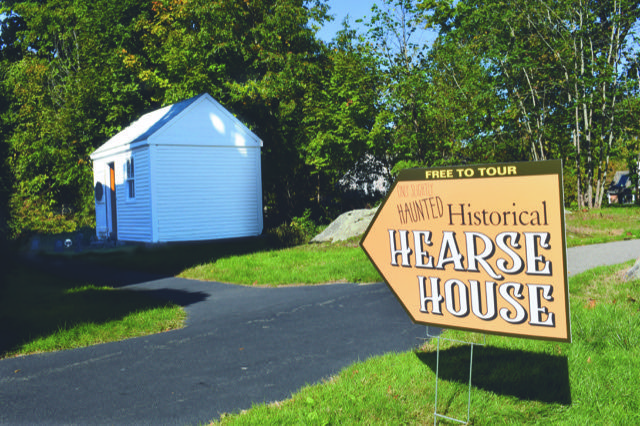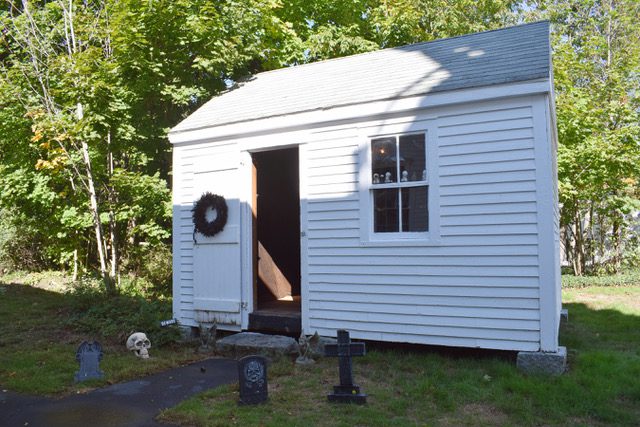
October 11, 2022 Submitted by Jane Shute
The Second Parish Pumpkin Patch, 685 Main Street, has a new “old” feature this year. The Hearse House, a 179-year-old building, located next to the church is open to the public and decorated with a Halloween theme, complete with coffin, candlelight, and skeletons.
According to the book, Two Hundred Years in South Hingham, by Donald F. Robinson, in 1843 a hearse was purchased with some financial assistance from the Ladies Sewing Circle of the church. Seventeen residents joined to form the South Hingham Hearse Company. They agreed that for one dollar or more a person would automatically become a proprietor. They then built, a wooden frame structure to house the hearse. The doors to the building have been covered with clapboards, but can be seen from inside the building.

The story of the hearse house is a story about how towns cared for their dead. It represents a transitional history bridging the time when care of the deceased took place at home, to the evolution of the funeral industry and the automobile. During the time when people died at home, mourning and funeral customs, such as a wake, were held at home. A horse-drawn hearse carriage, kept in a hearse house of a cemetery or church, would then transport the coffin to the cemetery.

In the late 1800’s, the funeral industry evolved with techniques such as embalming and fancier coffins replaced simple wooden boxes. Horse- drawn carriages also became fancier with windows. The undertakers or funeral directors might have shared the horse-drawn carriage with the church or cemetery. With the invention of the automobile, use of motorized hearses became more commonplace, and the care of the deceased was transferred to funeral homes. After that point, many hearse houses were lost to history. Their purpose undocumented, most were used as storage and eventually fell into disrepair. For that reason, it is unknown exactly how many remain but it is thought to be very few. Some on Cape Cod, in Essex MA and in Vermont have been restored, a couple complete with horse-drawn hearse carriages.

